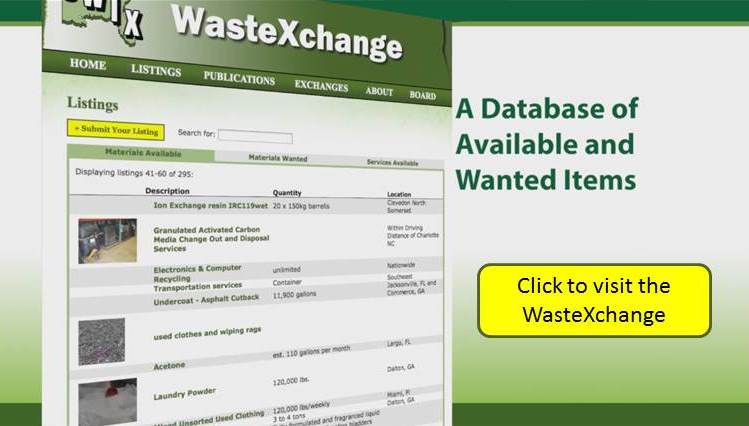Interesting Facts About Recycling & Why You Should Reduce-Reuse-Recycle

Interested in playing a role in saving the planet?
Check out the facts on recycling below.
How does recycling work?
There are three parts to the recycling process: collection, manufacturing and buying. These three components are so important that they are represented by the three “chasing arrows” of the recycling logo.
Collection – Don’t Send Recyclables To The Landfill
In this phase, materials are separated from the waste stream and prepared to become raw materials. Different cities and municipalities have different systems for sorting and collecting materials that can be recycled. At Stanford, we collect recyclables through the curbside and campus recycling program and the public drop off center. Once collected, we sort the material on campus into various categories.
Manufacturing – Using Recycled Materials Instead Of Virgin Raw Materials
Recovering the materials is just the first step. There must also be a market for it – companies that want the materials and are able to remanufacture them into consumer products. Sometimes these companies have to invest a significant amount of money in adapting their manufacturing processes to accommodate the use of recycled materials in their products.
Buying – “Close The Loop” By Buying Products With Recycled Content
In order to make recycling economically viable, there must be a market for recycled products. If people buy them, companies will be encouraged to make them, and the whole system works.
Why do we have to sort our recyclables?
Mixing different recyclables or contaminating them with garbage makes it more difficult to prepare and sell them to a market. Each market has certain specification for the type of material and amount of contaminants allowed. Organizations have to meet these standards in order to receive payment for the material. Materials are sorted into four main types (cardboard-paper, plastics, metals, and glass) to make it more economically to prepare the material for the recycling markets.
Is recycling worthwhile?
Recycling is one of the best environmental success stories of the late 20th century. In 2003, the United States ’ recycling and composting efforts diverted more than 72 million tons of material away from landfills and incinerators and instead turned those materials into valuable resources.Collecting recyclable materials is just the first step in a series of actions that generate a host of financial, environmental, and societal returns. There are several key benefits to recycling.
Recycling:
- Protects and expands U.S. manufacturing jobs and increases U.S. competitiveness in the global marketplace, creating 1.1 million jobs.
- Saves energy and prevents pollution caused by the extraction and processing of virgin materials and the manufacture of products using virgin materials.
- Decreases emissions of greenhouse gases that contribute to global climate change.
- Conserves natural resources such as timber, water, and minerals.
- Helps sustain the environment for future generations.
Recycling not only makes sense from an environmental standpoint, but also makes solid economic sense. With the steady growth of manufacturing in the Southeast, the need for recycled materials has grown steadily as well. Your old cans, bottles and paper products are in high demand and EPA is encouraging local communities to increase their recycling collection totals through the Resurce Conservation Challenge. By supporting manufacturing through recycling in your community, you are also supporting the development of jobs and an increase your community’s wealth.
Is recycling the best thing I can do to reduce waste?
You know what’s even better than recycling? Reducing the amount of waste you produce and reusing all that you can. The solid waste management hierarchy (shown in the pyramid to the left) ranks the most preferable ways to minimize solid waste. Source reduction or waste prevention, which includes reuse, is the best approach, followed by recycling. Waste that cannot be prevented or recycled can be incinerated or disposed through landfills, as long as it is done in accordance with proper regulations.
Why is source reduction at the top of the hierarchy? Because the best approach to managing solid waste is to avoid creating it in the first place. This means reducing the amount of trash you discard and reusing containers and products instead of throwing them away. Another way of thinking about it is to buy what you need and need what you buy. Be sure to look out for and avoid purchasing products that are sold in excessive packaging.
Once waste is created, recycling, which includes composting, is one of the most effective methods of reducing the amount of material in the waste stream. If waste cannot be recycled, incineration or disposal through landfills are the final, and least preferable, methods of treatment.
If there is plenty of landfill space, then why should I reduce, reuse, and recycle?
While landfill space may seem plentiful, how would you feel if a new landfill was proposed for your community? You might answer, “Not in MY backyard!” Placing a landfill is very difficult, especially in the southeastern states with heavy population growth. Besides, does burying otherwise valuable resources and making several hundred acres of landfill space unusable for future generations sound like a best-case scenario?
Some people think that by burying trash, it all just decomposes into dirt. While some breakdown does occur, decomposition isn’t a reality, because sanitary landfills are covered daily and sealed at the end of their use; thus, they lack the air, water, and light needed for materials to decompose. Click here to learn how a landfill works.
Highly combustible methane gas is also produced from the decomposition of trash, especially yard waste. That gas has to be tapped and burned off to prevent explosions but poses a larger problem too. Methane is a greenhouse gas that remains in the atmosphere for approximately 9-15 years. In fact, methane is more than 20 times more effective in trapping heat in the atmosphere than carbon dioxide over a 100-year period.
Is recycling good for the economy?
Now that you know that reducing, reusing, and recycling your waste saves land from landfill development, helps to preserve groundwater resources, and minimizes the amount of greenhouse gases released into the environment, let’s talk about the effects on the economy. You’ve probably heard that many recyclable materials have a monetary value that is wasted when the materials are landfilled. That’s true. But did you consider that communities can avoid high disposal costs by selling those recyclable materials? A penny saved is a penny earned!
Recycling is beneficial for your local economy in a broader sense too. A report released by the National Recycling Coalition at the end of 2001 offers perhaps the most compelling evidence of how and why recycling makes good economic sense. Simply put, recycling creates jobs and generates valuable revenue for the United States. According to the U.S. Recycling Economic Information Study, more than 56,000 recycling and reuse establishments in the United States employ approximately 1.1 million people, generate an annual payroll of $37 billion, and gross $236 billion in annual revenues. According to the report, the number of workers in the recycling industry is comparable to the automobile and truck manufacturing industry and is significantly larger than mining and waste management and disposal industries. In addition, wages for workers in the recycling industry are notably higher than the national average for all industries, according to the report.
NEED ASSISTANCE WITH RECYCLING?
CALL 800-441-7949
WE SPECIALIZE IN RECYCLED MATERIALS
OUR OFFICE CONNECTS MATERIALS PRODUCERS AND USERS
Sources:
US Environmental Protection Agency
Posted in: Uncategorized
Leave a Comment (0) ↓
